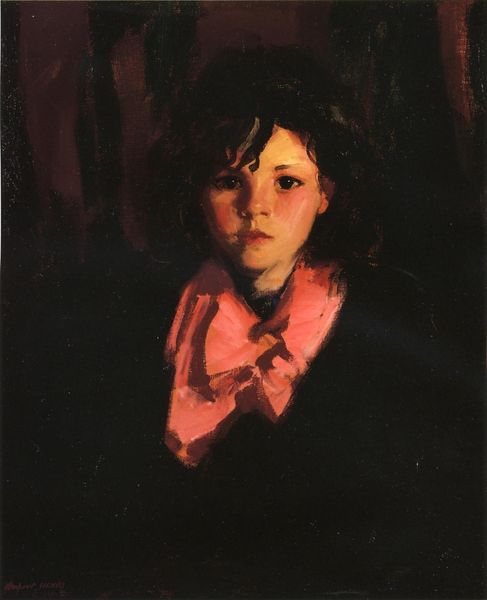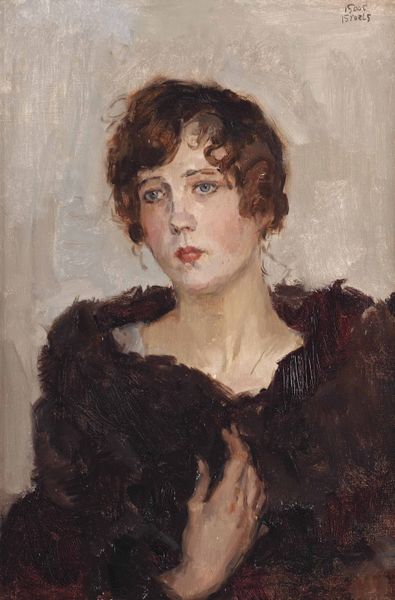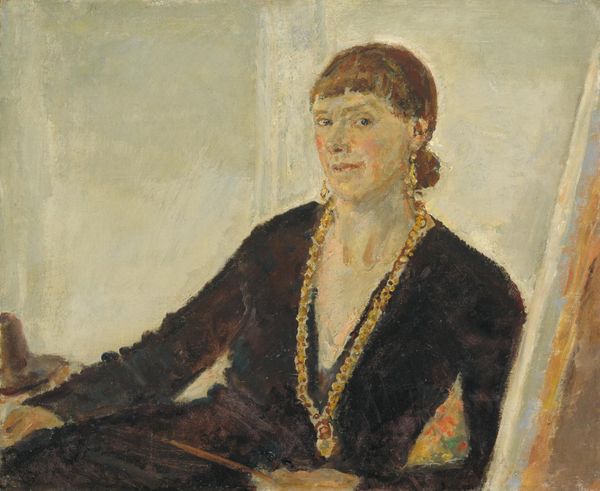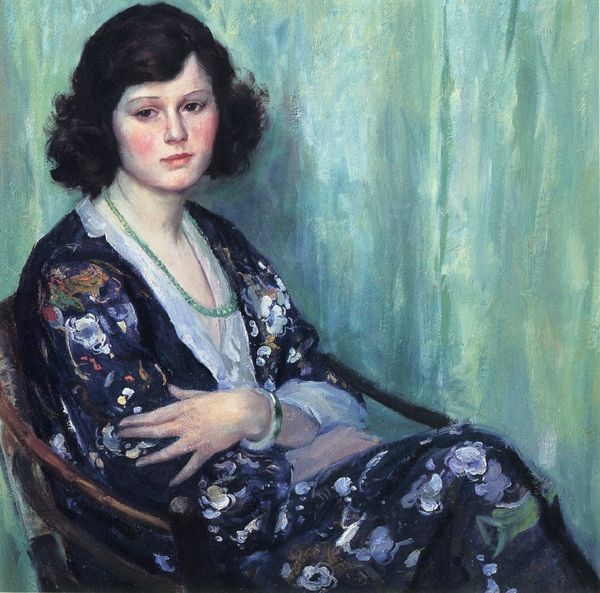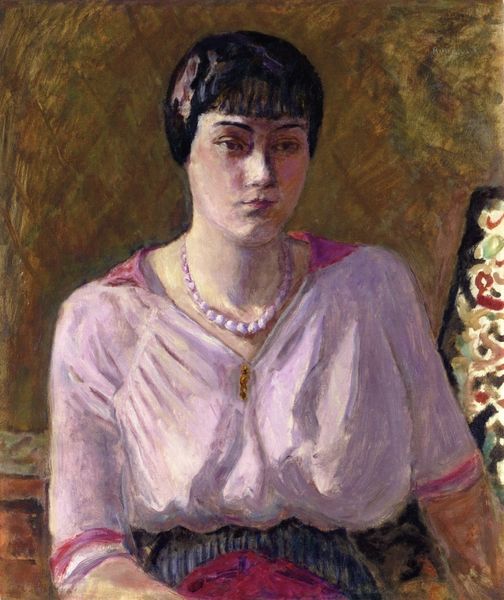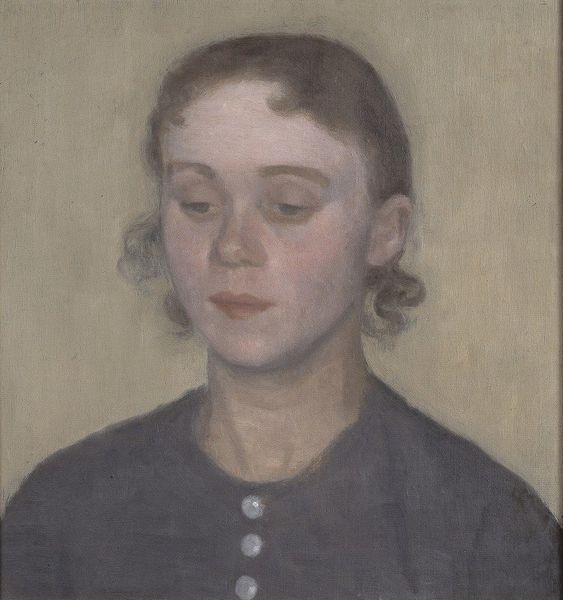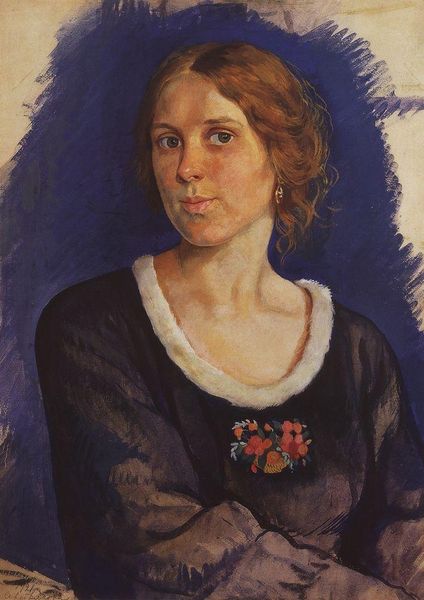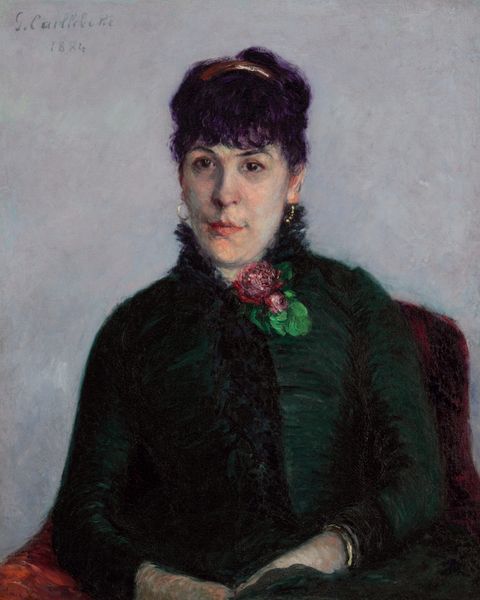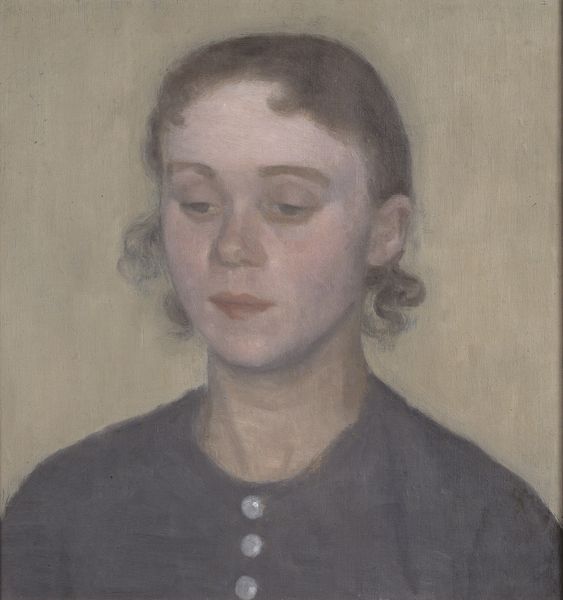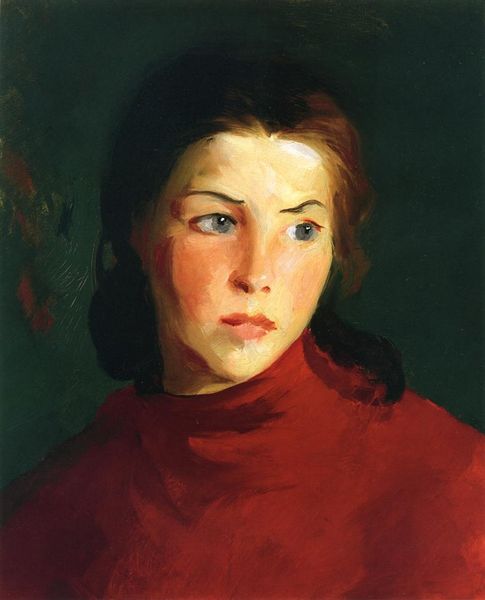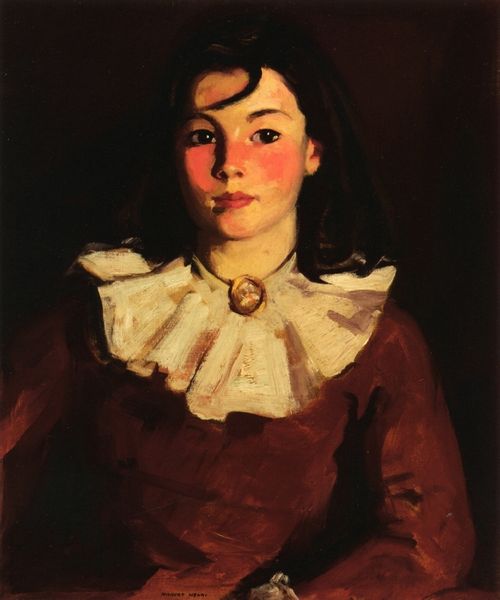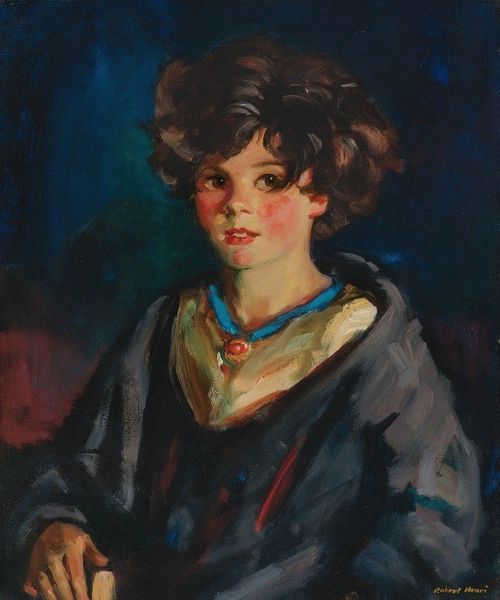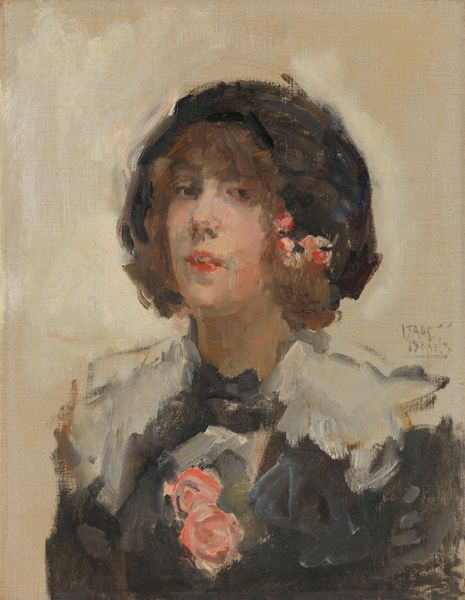
Copyright: Public domain
Editor: Here we have George Washington Lambert’s "The Belle of the Alley," painted in 1913 using oil paint. I’m struck by how the muted color palette and impasto create a slightly melancholic mood, and that single dark hair clip! How do you read this piece? Curator: Immediately apparent is Lambert's confident manipulation of impasto. Notice how the textural richness contributes to the visual weight, drawing the eye across the canvas and articulating a certain surface dynamic. Editor: So, it’s about how the oil paint is applied rather than what’s actually depicted? Curator: Precisely. The interplay between the deep purples and blacks of the background and coat and the flesh tones activates the surface, generating an energetic tension. Consider, also, the compositional weight. Is the subject's gaze as captivating without the off-center hair clip as its focal counterpoint? Editor: I hadn’t really thought about that, but I guess the asymmetry does give the portrait more character. Are the slightly rough brushstrokes a stylistic choice, then? Curator: Absolutely. They signal a departure from strict realism. Each stroke becomes a unit of expression in itself. Lambert asks us to observe the construction of the image, not merely the image itself. Do you see the geometric relationship between the line of her lips and the gentle arc of her scarf, for instance? Editor: Now that you mention it, yes! The more I look, the more I see how deliberate those details must have been. Curator: Indeed. And perhaps we can now appreciate the work on its own terms. It challenges conventional portraiture by emphasizing its very construction. Editor: That makes total sense. It’s fascinating how focusing on brushstrokes can change everything about how you view the image.
Comments
No comments
Be the first to comment and join the conversation on the ultimate creative platform.

